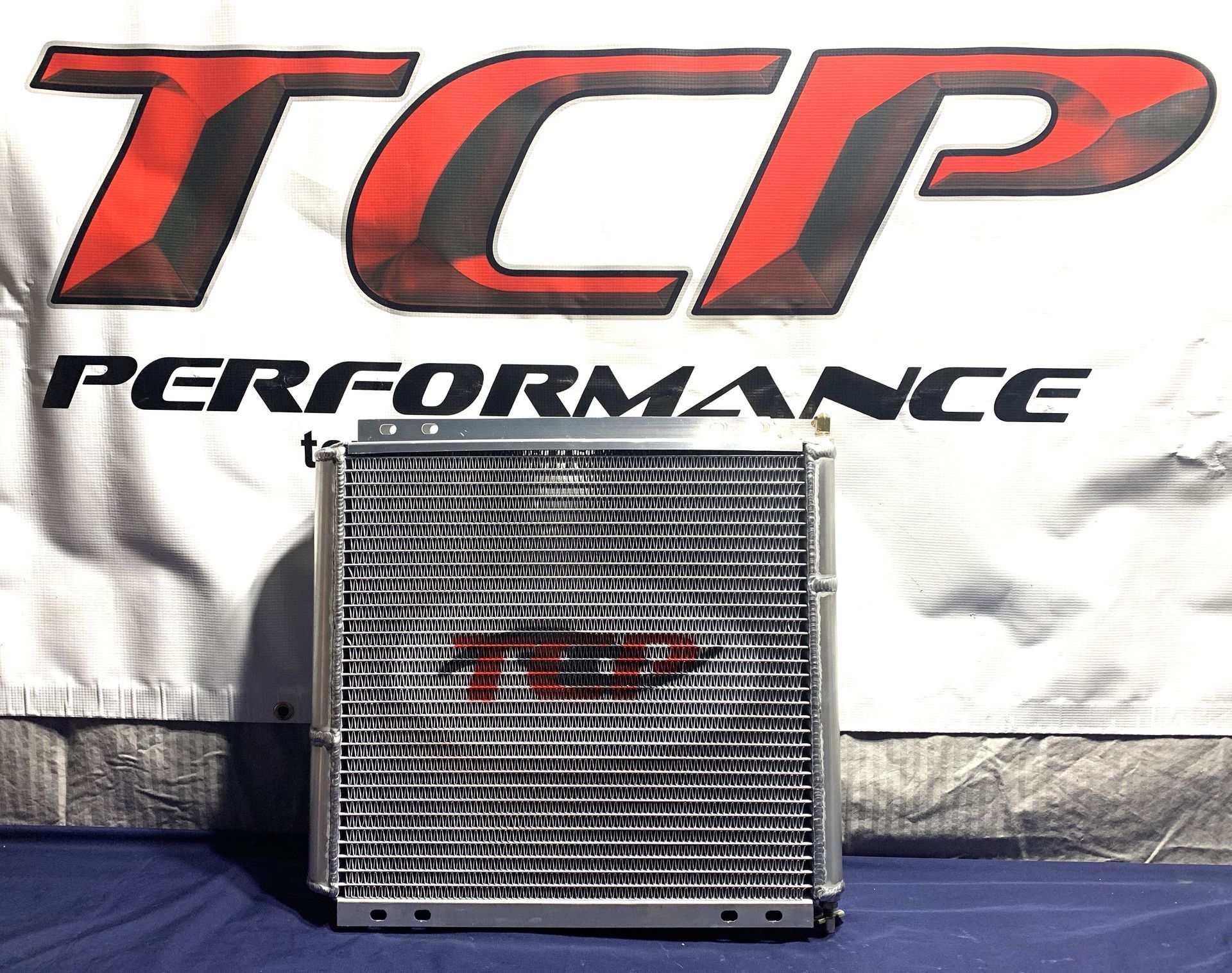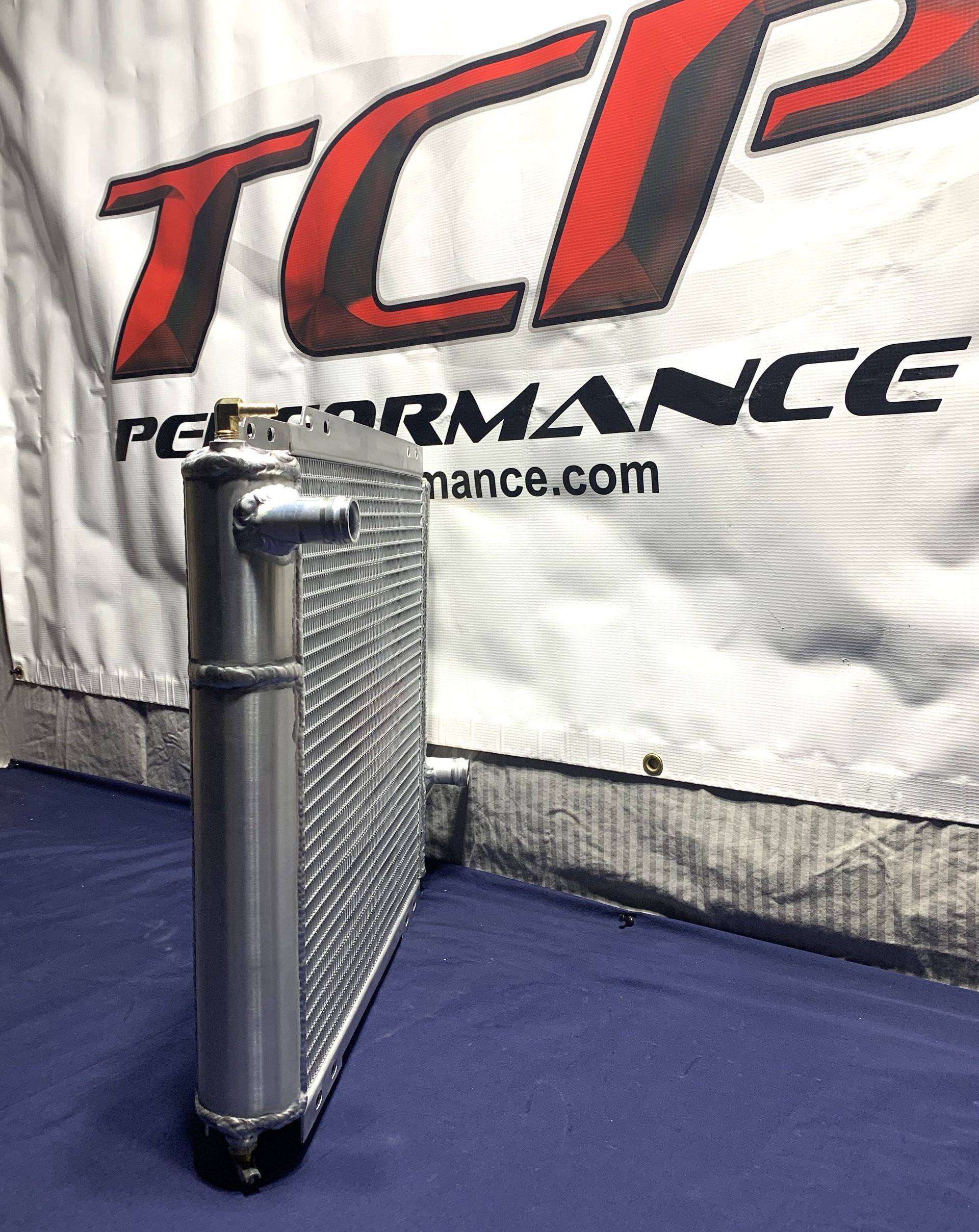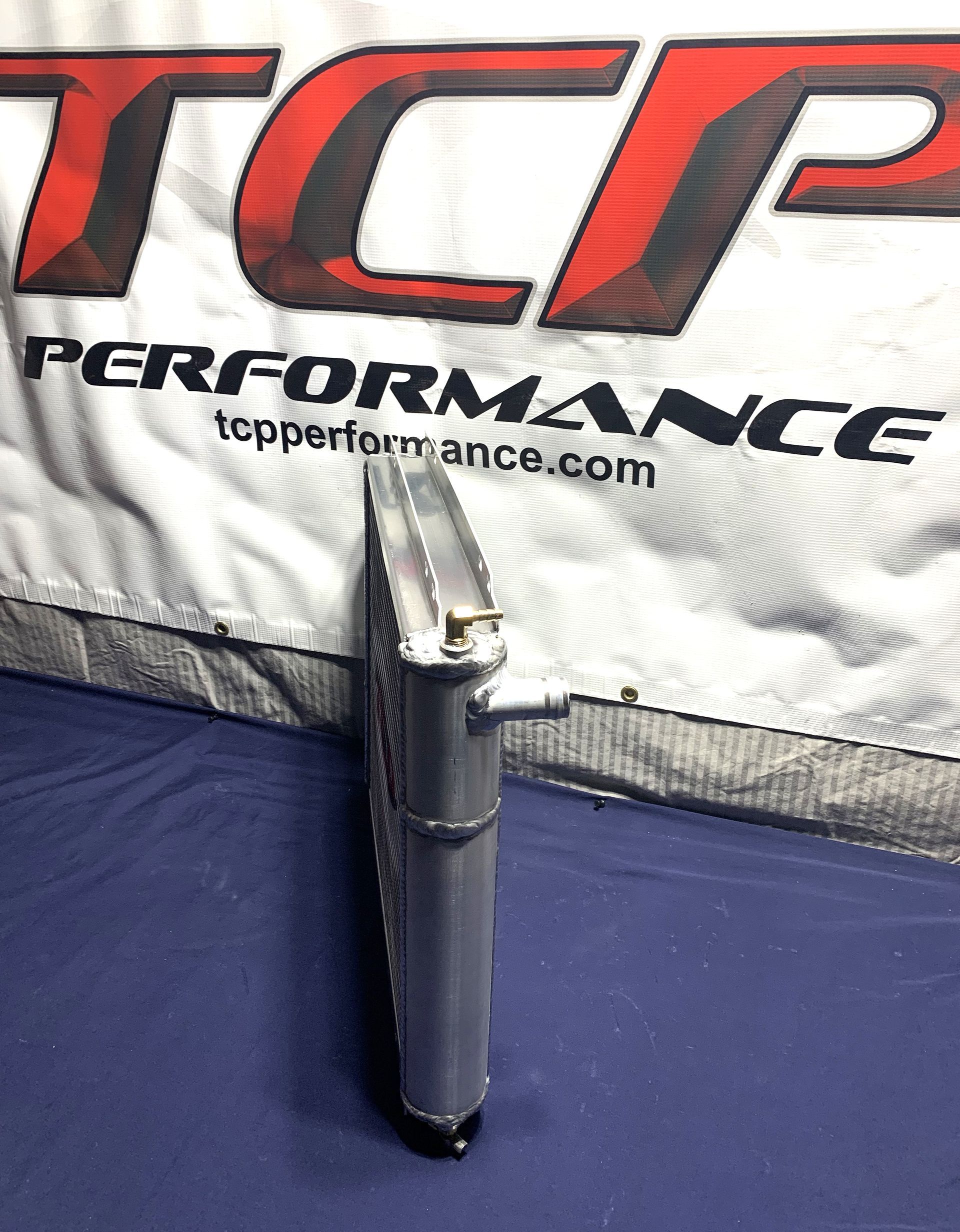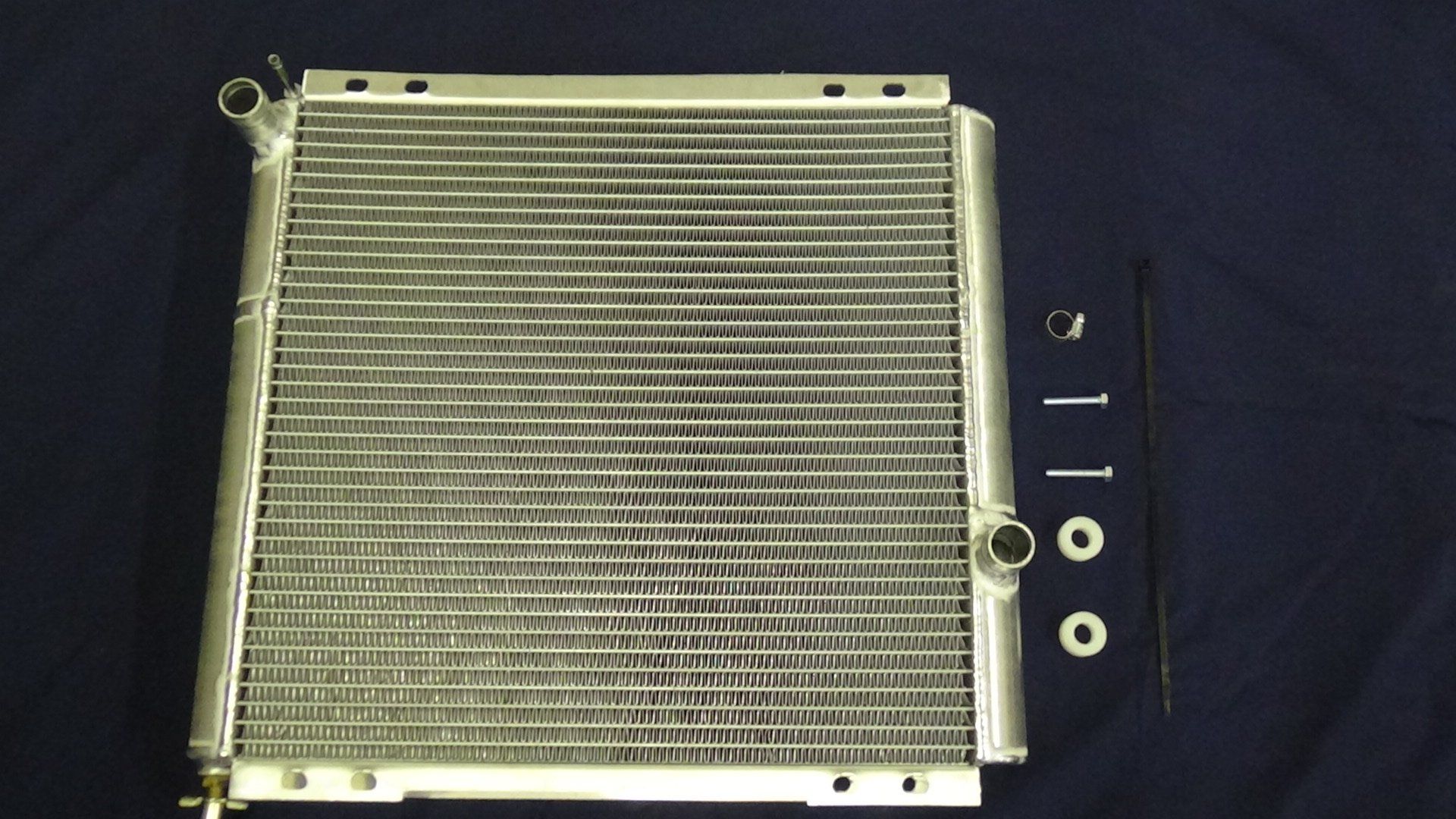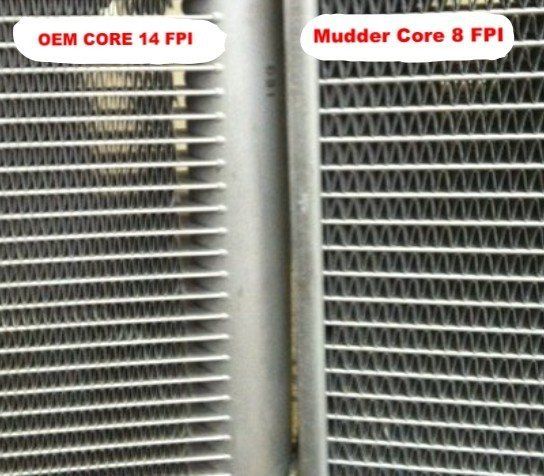Can Am Maverick X3 Radiator
X DS | X RS | X RC | X MR | MAX Turbo | Turbo R
2017-2024
Also fits OG Maverick years 2019 - 2023
(Note: Does not fit Maverick Sport Series unless you want to do heavy modification to the machine's plastics).
This unit will fit all 2017 - 2024 Maverick X3 models except for the Sport series. Sport series requires heavy mods to the plastics for it to fit.
Can Am Maverick X3 Radiator
XDS, XRS, XRC, XMR, MAX Turbo, Turbo R
Heavy Duty Triple Pass Radiator
Mudder Design: $839.00
High Efficiency Design: $799.00
The Can Am Maverick X3 | MAX | Turbo | R is growing rapidly in the Side by Side community. We have been contacted by a large number of people who want more cooling. The off road community always wants to go faster and climb higher! Performance modifications are necessary to reach the horsepower you're looking for. Most times these types of modifications will result in higher engine temperatures.
We have seen in this particular model that aftermarket radiator builders are taking shortcuts by simply relocating the radiator. This shortcut usually results in being unattractive, restricts visibility and can often be hazardous or dangerous. We receive a lot of phone calls about radiator relocation kits. We are concerned about the liability associated with a relocation kit especially the ones that mount behind your head to the roll cage, like the CBR Radiator unit. Let me explain, you're strapped into your side by side speeding down a trail or in the sand dunes with your radiator mounted behind you and your passengers head, then you have a tube in the core split or a hose burst. It starts spewing 200 degree coolant all over you and your passengers. How long under these conditions will it take to come to a stop safely, get everyone out of their seat belts and away from the hot coolant that is spraying on you? This is not a safe design, but an accident and a lawsuit waiting to happen! Not to mention, depending on the severity of the burns, a life changing event. This last reason is why we don't do relocate kits. The radiator relocation kits that mount to your hood, like the Wild Boar Radiator Relocation Kit, are not very expensive and there is not as much of a risk of getting burned, but they greatly reduce your visibility, mounting to your hood and sticking up 6 to 8 inches.
We take the time to keep the radiator in the factory location. This takes a great deal of time and planning, with most designs, to maximize the cooling while keeping the radiator in the factory location.
This TCP performance radiator will increase the overall cooling efficiency by a minimum of 65%. The results you are going to see will be that the engine temperature will be more stable, keeping it near the thermostat setting instead of seeing large fluctuations.
Why not protect your base investment of around $30 K, not to mention whatever upgrades you have done. This radiator is affordable, made with all components manufactured here in the USA and it keeps your coolant temps at a more stable and consistent level. The results are longer engine life and less wear and tear on the internal components of your engine. You might think of it as an insurance policy!
Our TCP radiator is built with a 2 1/4" thick core. Some of our aftermarket competitors are building it with a 38mm core (1 1/2"), which is no improvement over the OEM radiator thickness, and still have a single pass flow pattern. So, I ask you, where is the improvement?
Our unit incorporates our Triple Pass Radiator design. This feature alone will enhance the cooling efficiency of the unit by as much as 25%. Couple that with the fact that it is 33% thicker, which gives you 35-40% more cooling over the OEM radiator. That makes this the best aftermarket radiator in the industry.
If you are unfamiliar with the term Triple Pass Radiator I will explain how this is achieved. This process is most commonly used with a cross flow style radiator, meaning the coolant flow is from side to side (in a down flow style radiator the coolant flows from top to bottom). With a cross flow radiator we place a baffle in the tank 1/3 the way down on the inlet or top hose connection side of the radiator. On the other side of the radiator we place a baffle 2/3 of the way down the tank. The coolant comes in the top of the radiator and flows across the top 1/3 of the core. Then, the coolant drops down and encounters the baffle on the other side, forcing the coolant to flow back across the middle 1/3 of the radiator core and then it will pass through the final 1/3, or bottom portion of the radiator core. It will then exit, going back to the engine, thus the term Triple Pass Radiator.
Here at TCP Performance we will implement this design whenever possible because of the thermal efficiency it offers. The reason this process works so well is that it keeps the coolant in the radiator core for an extended period of time allowing more time for heat to be removed from the coolant. The result is coolant returning to the engine with less heat than just passing across the radiator core one time.
Flow pattern is a very important part of designing a radiator, and is often overlooked by O.E.M engineers. Often times we will begin a new prototype for an application wondering to ourselves, "What were they thinking?" Our family has been in the Radiator industry for 55 years. We use this experience and knowledge to bring to you the best and most efficient cooling designs available in the market to day.
We offer two core designs or versions in most of our side by side radiators simply because all riding conditions are not the same. The difference in the two designs is the number of fins per inch in the radiator core. Our HE core will have 14 F P I or fins per inch (this fin will have louvers in it to remove more heat from the coolant).
Our "Mudder" core, as we call it, will have only 8 F P I or fins per inch (this fin will not have louvers in it. This helps by not having small tight places for debris to get lodged and be difficult to remove).
The HE or High Efficiency core 14 F P I (being similar to the fin count of the OEM radiator core) is best used in applications where the type of riding you do is mainly dry conditions, where external clogging of the radiator core (such as mud or some other form of debris as a result of the conditions your machine is used in) is not experienced. This design will provide the maximum cooling for these conditions.
The Mudder core 8 F P I is used when you are experiencing external clogging of the radiator caused by the conditions the side by side is being used in. The reasoning behind this design is that if your radiator core is getting restricted or clogged externally it is unable to get adequate air flow over the cooling fins of the radiator core thus limiting it's ability to dissipate heat from the tubes that the coolant is flowing through. The benefits of this design are that it will allow larger debris to pass through the radiator as well as making it easier and faster to wash out the radiator when it does get restricted with debris. The mudder core can usually be washed out with a garden hose alleviating the need of a pressure washer which could possibly result in the fins getting bent which results in more problems down the road.
We often receive the question which one do I purchase? The answer is much easier than one might think, ask yourself am I needing to wash or blow out my radiator out often or repeatedly? If the answer is, "Yes, because I spend most of my time playing in the mud or I am riding on trails that are often plagued by mud holes or mud puddles, or even grass or weed seed", your answer is, you need the Mudder version! If you find yourself riding in dry conditions like sand dunes or steep dry long trails and you find that after a hard pull up a steep grade or when playing in the sand you are building excessive heat, your answer is you need the HE version!
If you are always washing your radiator out after rides imagine how much easier you could clean it.
The picture below clearly shows the difference between the standard OEM Radiator fin count and spacing verses our Mudder Radiator fin count and spacing.
OEM FACTORY Radiator Core vs. TCP MUDDER Radiator Core

